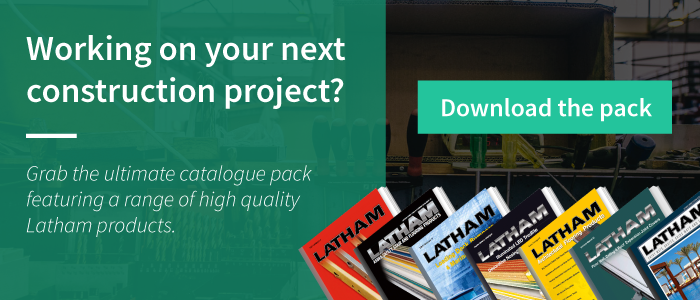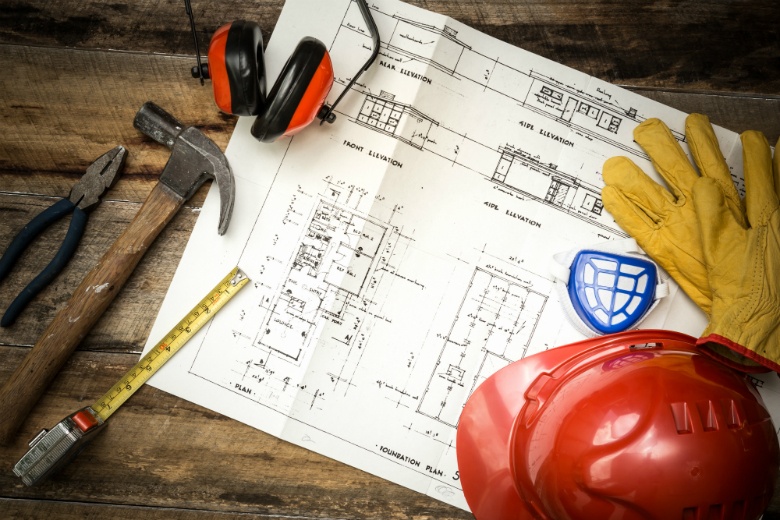When it comes to a new construction project, your clients will typically have one goal that will supercede all others; for everything to be as cheap as possible, and for the whole project to be within - or dare we say it, under budget. As a result, contractors and tradies in the construction industry often feel compromised for choice when it comes to quality building materials and safety products. Too often adhering to clients requests paves the path for cheaper substitutes.
While using cheaper materials and substitute safety products results in financial savings and a happy client in the short run, is it really worth it in the long run? Or are you putting your client and your own reputation at risk?
To help you answer these questions, we’ve taken a look at the major risks involved with this kind of cost-cutting strategy, and how you can avoid these issues in your next project below. This way, you can ensure that the essential safety measures audit taken upon completion of construction comes out with flying colours.
What are the risks of using cheap construction materials and safety product substitutes?
Building stability and longevity
When it comes to a new construction project, three things should be of paramount importance: building safety, stability, and longevity. By cutting corners with cheaper, poor quality building materials and safety substitutes, the resulting building and safety fixtures are more susceptible to wear and tear. This also has a negative impact on the stability of the building itself, with huge implications for occupant safety. Projects also run the risk of failing the essential safety measures audit undertaken at the end of building construction.
In December 2016, a faulty building crisis was covered in Melbourne, with many newer apartment blocks already showing signs of severe structural instability - due to the use of faulty, cheap materials and developers chasing profits over longevity. At least half a dozen occupied buildings were considered as unsafe for people to live in, thereby increasing the need for authorities to assess the quality of building materials as part of the planning permit process.
Increased risk of fire damage
Fire damage is a serious safety risk which needs to be reduced for many modern construction projects - especially with the increase in high-rise constructions. However, the use of low-cost safety products or construction materials can actually increase the fire damage risk, as they often do not meet Australian fire safety standards.
The Lacrosse building in Docklands has not only been a victim of a severe building fire costing $15 million, but the use of combustible cladding on the exterior of the apartment complex caused the fire to spread more rapidly than it would have otherwise. Consequently, it’s worth the time and effort to make sure you’re using quality building materials tested by NATA approved testing labs to ensure your construction projects aren’t compromising safety.
Health and safety risks
The ultimate cost of using cheap safety products for building and construction work is the large risk of injury or death to individuals and building occupants. When lives are at stake, there’s no excuse for taking chances–regardless of the product and price tag.
To avoid such issues from occurring entirely, it’s crucial to ensure that all materials and safety fixtures have undergone and passed the strictest Australian safety standards. When it comes to safety flooring for example, we believe that any safety flooring systems installed for human traffic should be tested for luminance, contrast, slip resistance, and fire. However, you should also be aware that different providers and products have their own testing criteria, and ensure they have obtained the relevant Australian and New Zealand Standards before using them.
Environmental concerns
One way to cut corners and increase savings is by adopting manufacturing processes and materials that are harmful to the environment. Where possible, choose safety products that are subject to stringent sustainable environmental practices by the manufacturer — and ensure they have best practice recycling, reuse and waste minimisation programs in place.
It’s also common to find that cheaper products have been produced with low-quality components that make them more susceptible to wear. This is a particular issue in the instance of safety flooring systems, because the continual exposure to human traffic will lead to higher cleaning, maintenance and more frequent replacement costs.
Compliance and Compatibility Issues
Non-conforming products (NCPs), which perform below the safety standards, have become increasingly common and easier to access in recent years, especially as imports become more common. However, industry experts are warning everyone that this is a situation that needs to be rectified as soon as possible, as many of them are falsely branded or illegitimately safety tested.
This means that while it may seem like a product is cheaper and adheres to the same quality standards as something from a more reputable brand, this is not always the case. It could cause severe impact on the durability, safety and longevity of your construction. When working with imported materials, it’s essential to assess their quality against domestic standards to ensure your compliance with Australian laws and regulations. Alternatively, you can also buy from local manufacturers who design their products specifically to comply with Australian safety standards.
Cheaper products can also have compatibility issues with local systems, making it difficult to try and fit the two together; particularly when it comes to reinforcing constructions with extra safety support systems. The integrity and durability of products such as safety step tread nosings, safety surface coatings and tactile indicator studs will be compromised if the materials they are installed on are not of reputable quality. Additionally, if you are using cheap substitutes for quality safety products, you may find it hard to source replacement parts in the future; or be forced to rebuild areas of a building entirely.
Last but not least; your reputation is at stake!
When it comes to being part of a successful construction project, it pays to remember that everything that happens will reflect on you. If a project goes well, it will promote you and your business; but if things go poorly, your company’s reputation will take the hit. As important as it is to ensure that your client is appeased by sticking to and staying within the budget, it is equally important to maintain the quality and safety standards across the project.
How Can I Mitigate These Risks?
One of the easiest ways to try and mitigate these risks, is to be clear and vocal during the design phase with what construction materials and safety fixtures will be required, so that they can be considered when the budget is being created. If the budget proposed is clearly too narrow to actually build a suitable construction with, push back.
In order to build a strong, durable building, an adequate budget is needed to ensure quality supplies for both construction and safety fixtures can be sourced. Make sure your client understands the risks of using cheaper, non-compliant or / and incompatible materials, compared to the clear benefits of premium materials and safety fixtures which have been reliably tested to comply with Australian and New Zealand standards.
Premium quality, Australian-made building supplies and safety fixtures can go a long way towards helping eliminate any safety risks and to ensure legal compliance. If you’d like to take a look at Latham Australia’s range of tried-and-tested products for your next project, give us a call; or download our catalogue pack to source quality products for your next project.
To find out more about Latham products, please visit www.latham-australia.com. To talk to a Latham product expert, call 1300 LATHAM (528 426) or email sales@latham-australia.com.


